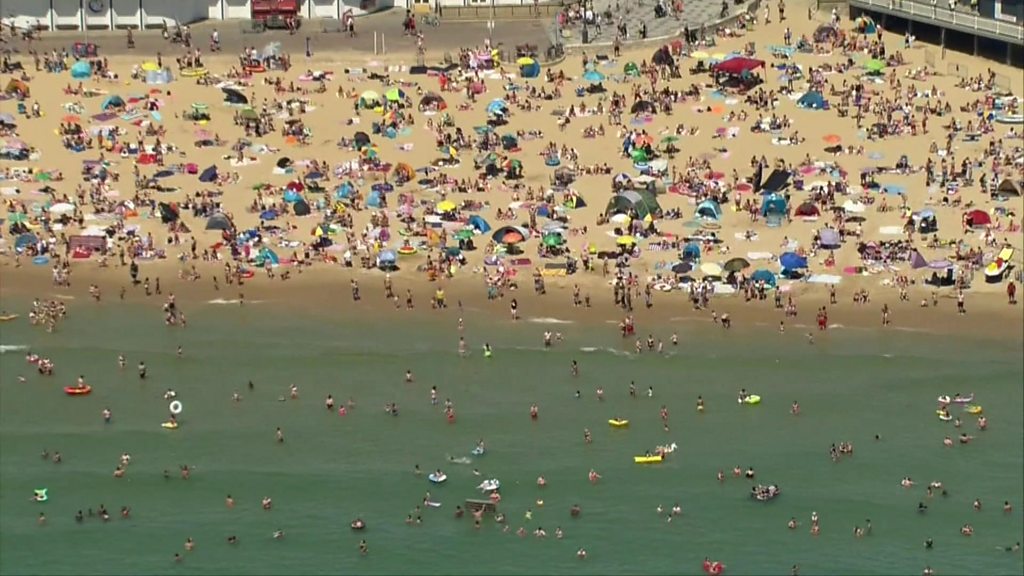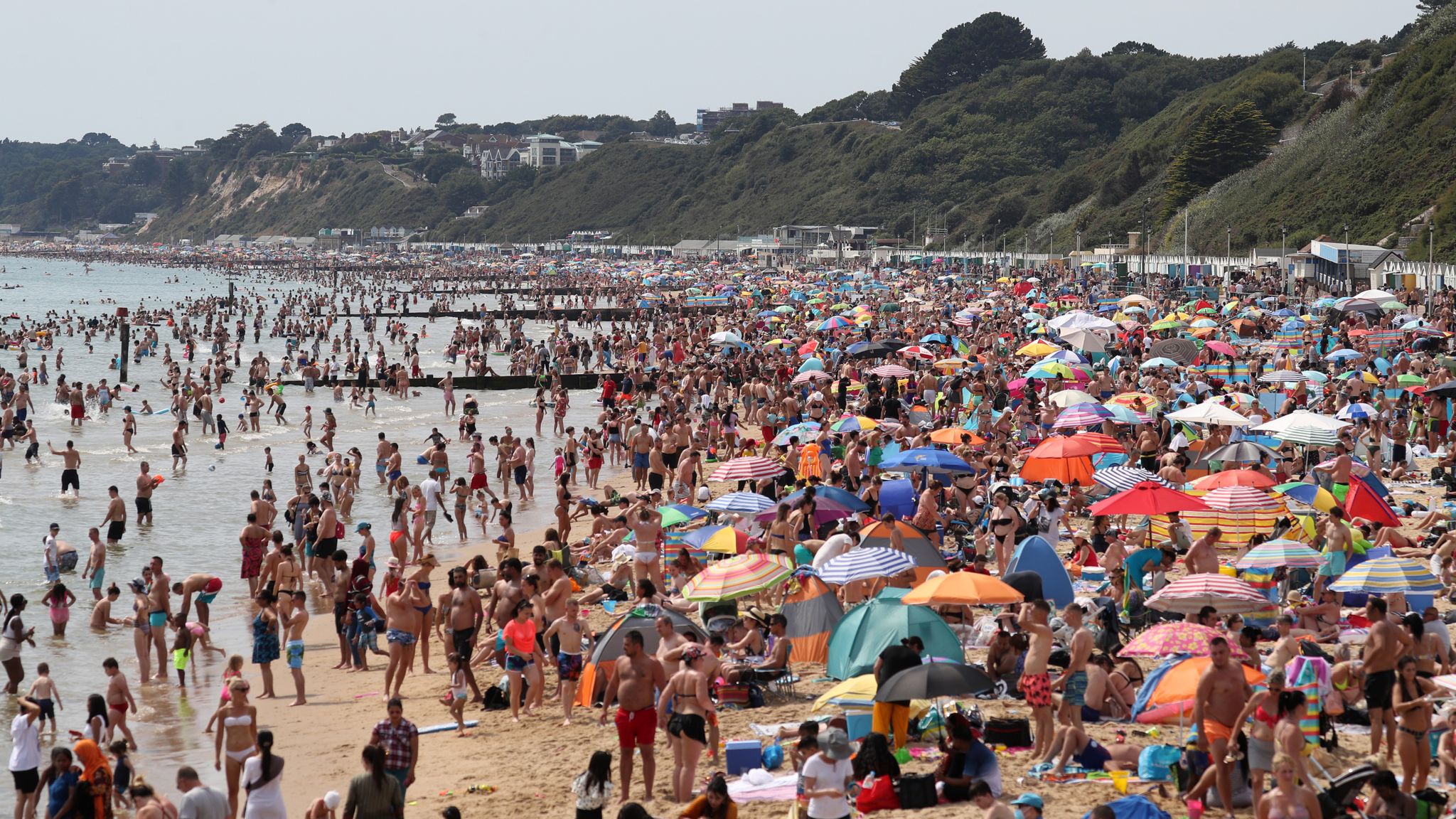When Lockdown Met Heatwave: The Day Bournemouth Beach Became Overwhelmed
In June 2020, as much of the UK was under strict Covid 2020 beach restrictions, Bournemouth beach witnessed an extraordinary and chaotic scene. With temperatures soaring to 33.3°C (92°F), thousands flocked to the seaside, defying public health warnings and overwhelming local services.

Photographer Glyn Kirk captured what would become one of the most iconic images of the pandemic — masses of people packed together on the Dorset coastline, sparking headlines like “Armageddon” from the Daily Telegraph.
UK Lockdown Restrictions Start to Ease
Earlier that year, the UK had entered a full lockdown. Public gatherings were banned, shops were closed (except for essentials), and life came to a standstill. As the first wave of Covid deaths surpassed 50,000 by early June, small relaxations were introduced. Some shops reopened, and social distancing rules were adjusted from 2 meters to 1 meter in certain circumstances.
With summer arriving, many saw the easing as a green light to head outdoors. The beaches of Bournemouth, Christchurch, and Poole became ground zero for a spontaneous mass exodus from lockdown isolation Covid 2020 beach.
Declared a Major Incident

The scale of the crowds led Bournemouth, Christchurch and Poole Council to declare a major incident. Streets were gridlocked, emergency services were stretched, and local waste crews had to clear over 41 tonnes of rubbish — including human waste, as public toilets remained closed due to Covid regulations Covid 2020 beach.
Photographer Glyn Kirk, who was assigned to document the unfolding situation, recalls the surreal atmosphere: “You can see people were kind of distanced on the beach. It was weird. How can all these people keep away from each other?”
Explore more on Health & Science News
Super-Spreader Fears
The Bournemouth beach crowds weren’t the first mass gathering during the pandemic. Just a few months earlier, events like the Cheltenham Gold Cup had already raised concerns about super-spreader incidents. Large gatherings of people in tight spaces risked accelerating transmission of the virus just as the nation was trying to flatten the curve.
Photographing the Chaos Amid Network Overload
Even capturing the images proved difficult for Kirk. With so many people using mobile phones, the network was overwhelmed, making it nearly impossible to upload photos remotely. He had to walk for miles just to find a spot with a strong enough signal to send the images back to his agency.

“There were so many people, it was like every part of Bournemouth had become one giant beach party,” Kirk said, reflecting on the surreal day.
Public Health Concerns Beyond Covid
The packed beaches weren’t just a Covid risk. With no toilets open, sanitation became another issue. Similar problems had emerged across locked-down London, where even basic amenities like restrooms in Tube stations remained closed for months.
When the Beaches Fell Silent Again
Prior to the chaotic scenes, places like Brighton — Kirk’s hometown — had seen eerily empty beaches for months. Seagulls, deprived of their usual chips stolen from beachgoers, were some of the few regular visitors to the shoreline during strict lockdown phases. The abrupt return of massive crowds was a stark contrast.
The Legacy of Bournemouth’s ‘Armageddon’
The images from Bournemouth remain some of the most vivid visual reminders of the tension between public freedom and public health during the first year of the pandemic. They serve as a cautionary tale about balancing personal desire for normalcy against collective safety during a crisis.
Conclusion: A Snapshot of Pandemic Contradictions

While Britain struggled to manage one of the worst Covid outbreaks in Europe, moments like Bournemouth’s crowded beaches reflected the public’s growing frustration with lockdown fatigue. But they also highlighted the real challenges of balancing mental health, freedom, and pandemic control — lessons that continue to resonate even years later.









